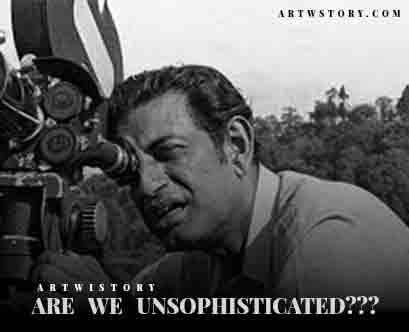The history of cinema compared to any other art form is very short. It is not even 200 years old. And the development was too rapid. And through silent cinema, techniques started evolving to tell stories. So, why the era of silent films was so fascinating and how they developed techniques to build narrative for the storytelling?
From Spectacle to Storytelling

So the better question would be who was the first to take steps to build narrative cinema, because before that cinema was a means of spectacle and everyone saw the footages of train passing by, watering the garden and some random footages.
It was George Méliès, a magician turned filmmaker. Méliès is often considered the father of cinematic fantasy storytelling. He used to show magic tricks through stop motion editing and much more. He made the famous film, A Trip to the Moon (1902) where he crafted coherent stories. It had a beginning, middle and an ending. It was combined with theatrical mise-en-scène and trick effects.
Edwin S. Porter and the Language of Editing
In 1903 Edwin S. Porter made another landmark narrative film, The Great Train Robbery. He was a projectionist in Edison’s company. He introduced parallel editing and used continuity to build suspense.
D.W. Griffith and Narrative Refinement
Eventually came D.W. Griffith who is often (though controversially) called the father of narrative cinema. Some argue that the things he developed or used in his films were often used earlier. But he used all those techniques to tell stories. He refined continuity editing and used techniques like match on action, close-ups, establishing shots and parallel actions. Films like Birth of a Nation (1915) and Intolerance (1916) established a visual grammar for storytelling. It might be problematic content but undeniably an influential form.
Cecil Hepworth and Rescued by Rover (1905)
But if we have to mention the first film with a tightly structured narrative, it will be Rescued by Rover (1905). It was made by Cecil Hepworth, a British filmmaker. The film is about a dog saving a child. He saves his owner’s child by finding the old woman who did it. The film had clear continuity, a cause and effect logic and spatial coherence, which became a hallmark of Classical Hollywood storytelling later.
He used spatial coherence so that the viewers could track where Rover, the dog, was moving. Even though the film is an early silent 6-minute-long film, it had a beginning, a middle and an end.
From Cinema of Attractions to Narrative Cinema
Before this, film was known for its early tricks and spectacle, that is why it is known as cinema of attractions. So, the film became a bridge or the key stepping stone from the cinema of attractions to narrative-driven cinema that Classical Hollywood Cinema would adapt and perfect later.
I will be sharing the YouTube link to the films that I have mentioned in this article. You might find that the films have music in the background. So the question might be infinite in your mind: was Silent cinema ever Silent? And this is a famous quote too. And yes, Silent Cinema was never Silent — but why?
Silent Cinema Was Never Truly Silent
Michel Chion, a French critic and a composer, always mentioned this era as “Deaf” rather than Silent. Because Silent cinema was always accompanied by live acoustics or music and sound effects. And sometimes they even used narration. So, many such efforts were made to indulge audiences in the narrative or to create a narrative for the storytelling.
Timeline of Silent Cinema
So, Silent cinema started with the birth of cinema, with the first public screenings in Paris (December 28, 1895). After that up to 1900, the films that were screened were either some random work happening or like boxing matches or something else.
Eventually from 1901-1902 the building of narrative started and implementing it in cinema began.
The Golden Era (1905–1920)
1905-1920, I consider 1905-1920 as the golden era of silent cinema where new things developed, inventions were made and new ways of storytelling and editing were introduced.
Charlie Chaplin and Silent Masterpieces
But I consider Charlie Chaplin as one of the golds of the Silent Era. His films like The Kid (1921), The Gold Rush (1925) and City Lights (1931) are masterpieces of Silent Storytelling, even though they don’t belong to the golden era of silent storytelling.
There is a trivia fact at the end, please take a look into that. But with golden era, I tried to implement when most of the inventions took place and we could see new types of storytelling with a better and recent approach.
The End of the Silent Era
While it ended in 1930 almost, because most major studios had fully transitioned to sound. Silent films were still being made briefly (especially outside Hollywood or in low-budget productions), but commercially they were obsolete. The watershed moment was The Jazz Singer (1927) the first feature-length film with synchronised dialogue (talkie).
Well, I am not that old and I have not seen many Silent films, but I remember watching Charlie Chaplin’s slapstick comedy. So tell me in the comment section whether you have watched any of the silent films and if yes, when and which one?
Trivia: Chaplin’s Resistance to Sound
In 1931 Hollywood had already embraced synchronised sound. In that same year Charlie Chaplin released City lights. Yet Chaplin stubbornly stuck to silent form with musical accompaniment. It was because he believed sound would kill the universal, borderless language of cinema. Even modern times (1936) is essentially a silent film, it just has synchronised musical score and occasional sound effects (the famous, Chaplin’s gibberish singing sequence). He only embraced the dialogue in The Great Dictator (1940), where he delivered that powerful final speech.


